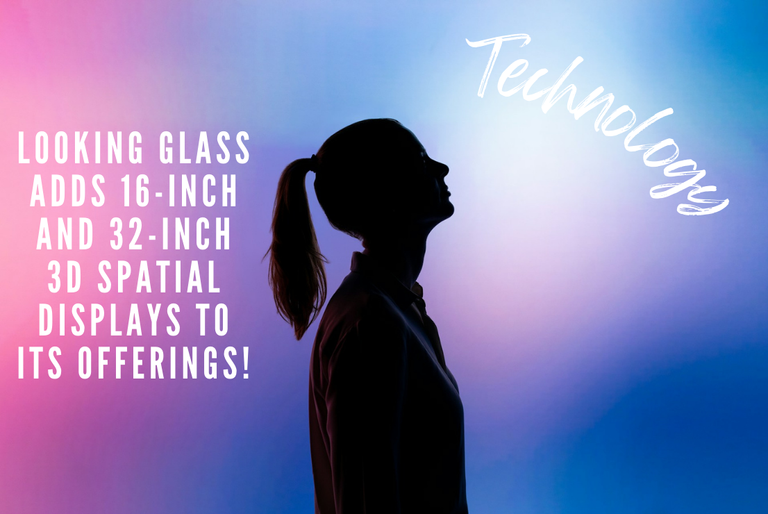Looking Glass adds 16-Inch and 32-Inch 3D Spatial Displays to its offerings!

ThisisEngineering | Unsplash
When we talk about holographic images, it is difficult not to imagine something from science fiction like what we see in many futuristic movies. Perhaps we are still a long way off, but the closest we have as a technology is based on screens built in a way that generates this illusion.
In this context, Looking Glass is moving in a very good direction, being chosen by important companies, such as NVIDIA, led by Jensen Huang, who attended a holographic video call at a Siggraph exhibition in 2023. Clearly an absolute impact is being generated, and more companies are being part of this.

But what's so special about these displays? Basically, they reproduce 3D images without the need for glasses, and do so through mixed reality. In this way, group interaction with a 3D figure is possible without the need for any type of extra peripheral to be able to visualize it. As a technology, it is focused on the use by design professionals, although it can also be extended to other areas such as education, engineering and medicine. With this in mind, teamwork could have an improvement in performance as there are no drawbacks.
In addition, these screens allow the visualization of up to 100 people, increasing the shared experience. Undoubtedly this greatly benefits the immersion in a 3D figure in which you are working, and the interesting thing about all this is that there are a variety of creation tools through major graphics engines such as Unreal, Unity, Blender and WebXR, as well as development kits are also available, all this in order to create holographic content. In my opinion, the tools that exist, allow to generate a wide range of possibilities, which undoubtedly, the artists will be able to take advantage of.
New 16-inch and 32-inch displays were launched today. The former, called the 16-inch Looking Glass space display, has a bargain cost of $3000 if pre-ordered, otherwise its value goes up to $4000. As for the 32-inch version, no price is specified, so we assume it is quite high.

Something that is striking to me is that these displays can be oriented vertically or horizontally, which benefits the viewing experience and the way you work, as it gives extra flexibility with respect to different 3D modeling.
Previously there was a 15-inch model at $6000, and considering the current price for the 16-inch model, it has decreased considerably. In this sense one may wonder if prices will continue to drop in the future. There are also other models, such as the 65-inch model and others that are the size of a cell phone or in this sense a picture frame.
I can't say that I'm not shocked when I see 3D figures, they really amaze me. The sensation of depth is very evident, and I think this is just the beginning of something that will improve in the future. One thing left to say is that the 3D models can be manipulated through gestures, further denoting that this is a cutting-edge technology.
What kind of use could these screens have? I imagine that when they begin to be mass marketed, we could see them in shopping malls or stores that want to generate more interest and visual spectacle to promote products, although this is just my idea, because for now the use cases are those mentioned in previous paragraphs. Another use that comes to my mind are the NFTs, which could be exhibited through portrait format screens, or perhaps the arrival to the cinema to play the most shocking movies of recent times, why not?

Main image edited in Canva.
I have consulted information in techcrunch.com and Looking Glass official site
I have used DeepL to translate from Spanish to English.
Posted Using InLeo Alpha
Shared VR amazing never thought about it!